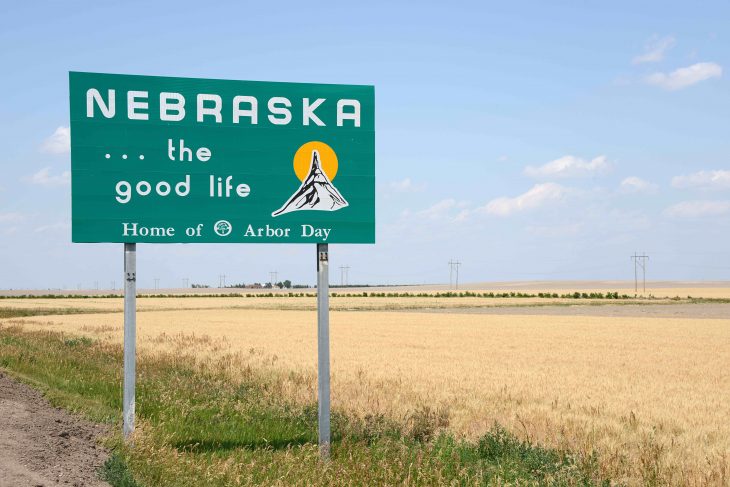
Nebraska often gets overshadowed by its neighboring states, but it has its own place in history. It also made momentous and impressive contributions to the USA it is part of, which everyone should know about. Learn more with these 50 Nebraska facts.
- Nebraska covers an estimated 77,000 km² of area.
- Water makes up an estimated 1,200 km² or 1% of the state’s area.
- At its lowest point on the Missouri River, Nebraska has an elevation of 256 meters above sea level.
- An estimated 1.96 million people live in the state today.
- This gives Nebraska a population density of 10 people for every km².
- Europeans first arrived in what would become Nebraska in the late 17th century.
- The French explorer Etienne de Bourgmont first used the name Nebraska in its French form, Nebraskier, in 1714.
- France later surrendered all its claims to Nebraska to Spain after the Seven Years War.
- Permanent European settlement of the region began in the 1790s.
- Native American resistance prevented the British from attacking the USA through Nebraska in the War of 1812.
- American explorers charted the region in the early 19th century.
- The Nebraska Territory stayed loyal to the Union during the Civil War.
- Nebraska gained statehood in the aftermath of the Civil War.
- Democrats dominated Nebraskan politics through the late 19th century.
- Republicans gained control of the state from the 20th century onward.
- Omaha makes up the largest city in Nebraska.
- The state instead counts Lincoln as its capital city.
- Most of the state belongs to the USA’s Central Time Zone, or GMT-6.
- Panhandle makes up the exception, belonging instead to the Mountain Time Zone, or GMT-7.
- Nebraska comes from the Native American words Ñíbrahge and Ní Btháska, both meaning “flat water” and both referencing the Platte River.
Was this page helpful?
Our commitment to delivering trustworthy and engaging content is at the heart of what we do. Each fact on our site is contributed by real users like you, bringing a wealth of diverse insights and information. To ensure the highest standards of accuracy and reliability, our dedicated editors meticulously review each submission. This process guarantees that the facts we share are not only fascinating but also credible. Trust in our commitment to quality and authenticity as you explore and learn with us.
